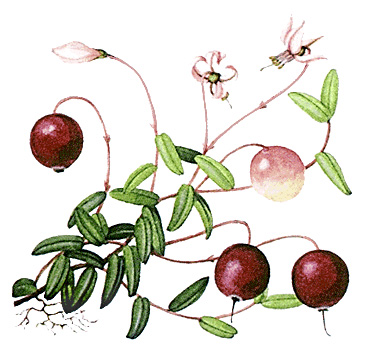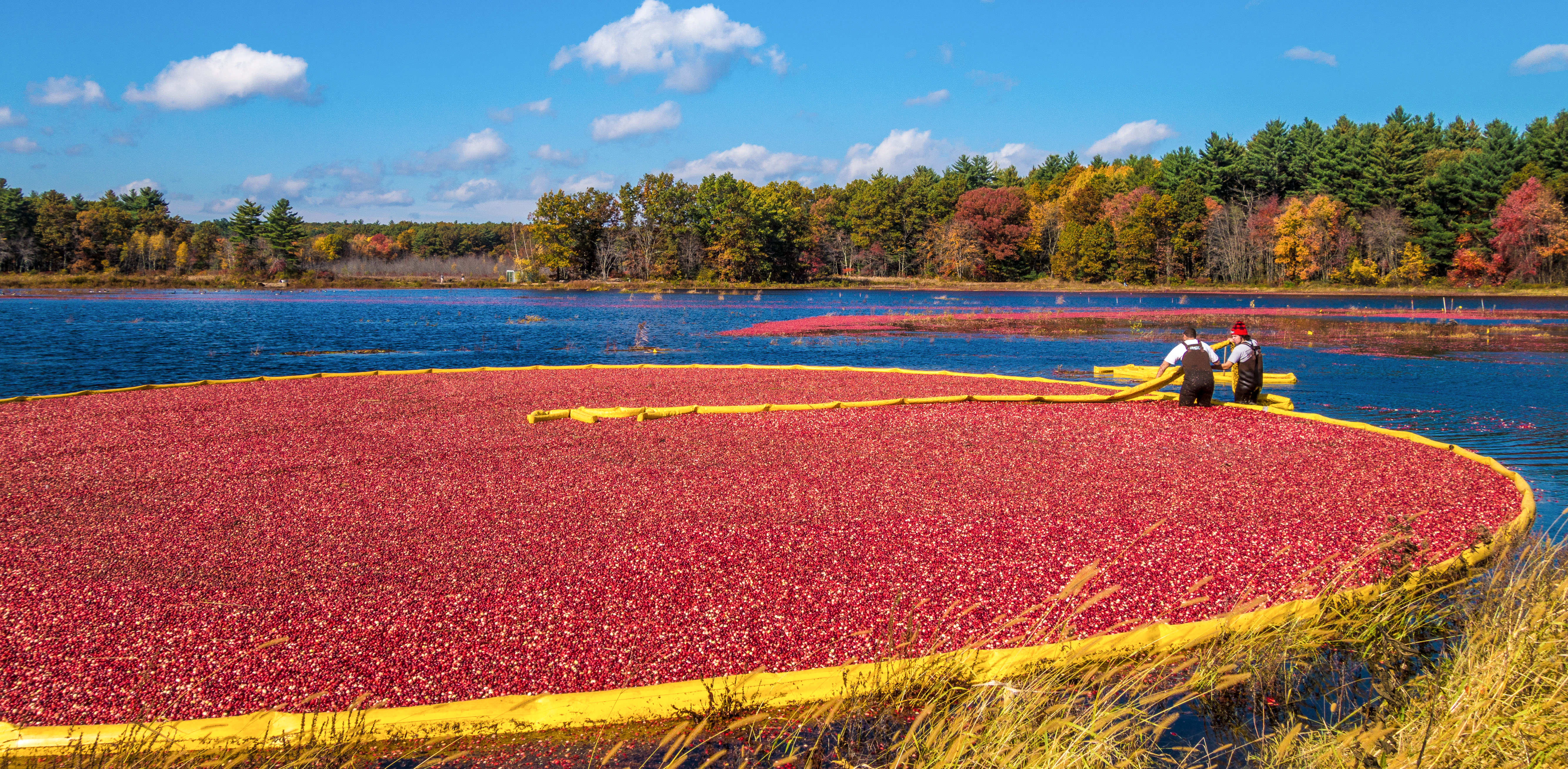Cranberry is a red, tart, round or oval fruit that grows on an evergreen vine. In the United States, cranberry sauce is a traditional Thanksgiving food. Many people also drink cranberry juices. Cranberries contain vitamin C. In the 1800’s, many American sailors on long voyages ate cranberries to prevent scurvy, a disease caused by a lack of vitamin C. Some Native Americans have traditionally used the berries as a medicine and as a dye.


The cranberry vine grows low to the ground and produces white or pink flowers. It has oblong leaves and woody trailing stems called runners. The berries develop on uprights, stems that rise from the runners. Cranberry vines are native to North America. They grow wild in swampy areas of cool regions. In the United States, commercial growers cultivate cranberries in Massachusetts, New Jersey, Oregon, Washington, and Wisconsin. Cranberry production in Canada takes place in British Columbia, Quebec, and Nova Scotia.
Commercial growers prepare special bogs (wetlands) for cranberries. The growers clear and level the land for quick flooding and drainage. They then cover the soil with 3 to 4 inches (8 to 10 centimeters) of sand. Cranberries grow best in acidic soil that contains some organic matter (material produced by plants and animals). The bogs must have a large supply of water nearby. Growers flood the bogs repeatedly to protect the plants from frost, insects, and disease and also when the berries are ready to harvest. If correctly prepared, a bog can produce fruit for more than 60 years.
Growers start new cranberry vines from cuttings 6 to 8 inches (15 to 20 centimeters) long. The cuttings are spread over the sand, then pressed into the sand by machine. Growers sometimes plant the cuttings by hand, placing the vines about 1 foot (30 centimeters) apart. As the cuttings grow, they form a matlike covering over the floor of the bog. The vines begin producing fruit after about three years.
Cranberries are harvested in September and October. To harvest berries for processing into juice or sauce, workers flood the bog. A harvesting machine then rakes or knocks the berries from the vines. The berries float to the surface of the water, where workers collect them. To gather berries to be sold whole, mechanical rakes or scoops pick the berries off the vines. This method better preserves the firmness of the berries.
